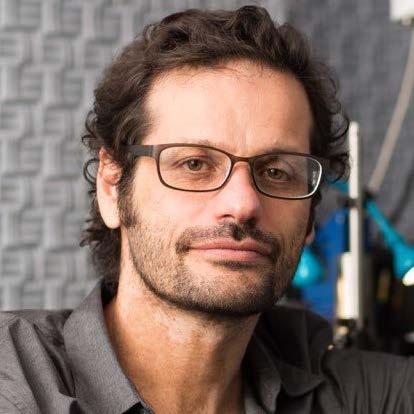
3 minute read
Faculty Grants
Dr. Carey Balaban
Dr. Carey Balaban received a grant from the Department of Defense to understand, through modeling and testing, the biological effects of directed energy on the human body. Sounds above the range of human hearing (ultrasound) can also be ‘heard’ when directed from behind a person at the mastoid process of the temporal bone. The project will extend analyses of the acoustic transmission properties of these cranial structures that are germane to the reception of airborne and direct contact acoustic energy. The knowledge will have wide-reaching implications from military use to health care and better training simulators and entertainment. Dr. Balaban also received funding from the Department of Defense for two projects, NonInvasive, Head-Mounted Measures of Vestibular Function, and Portable Computerized Dynamic Posturography, and Balance Training System to Deliver Sensory Organization Tests in Clinic and Field Environments (Portable Computer).
Advertisement

Dr. Chris Cunningham
Dr. Chris Cunningham was a winner of the Bruce and Barbara Wiegand Entrepreneurial Research Award. Dr. Cunningham and his team will work to develop and test gene therapies for LRTOMT-associated deafness. The Bruce and Barbara Wiegand Entrepreneurial Research Award was established by Mr. and Mrs. Wiegand through the Eye & Ear Foundation to provide much needed funding to promising projects that are approaching commercialization. This grant allows the Foundation to receive future support through any successful commercialization.
Dr. Manoj Kumar
Dr. Manoj Kumar received an Emerging Research Grant from the Hearing Health Foundation for his project studying the signaling mechanisms of auditory cortex plasticity after noise-induced hearing loss. This project will highlight the path for the development of novel treatment options for impaired hearing and hearing-loss-related disorders such as tinnitus and hyperacusis.

Faculty Grants (continued)


Dr. Marci Nilsen
Dr. Marci Nilsen received a grant from TJA Health, LLC to identify the effectiveness of two mouthsprays at relieving symptoms of xerostomia in patients who have received radiation for carcinoma of the head and neck. To assess patient quality of life and mouth acidity following use of two mouth sprays meant to relieve symptoms of xerostomia in patients who have received radiation for carcinoma of the head and neck. Dr. Nilsen also received a grant from the NIH to investigate the prevalence of cancerassociated pain and stress and their role in tumor progression and cancer pain. The hypothesis of this proposal is that sympathetic nervous system (SNS) exacerbates cancer pain and drives tumor progression via local adrenergic signaling in the cancer microenvironment. To test this hypothesis, Dr. Nilsen and her team will explore the relationship between patient-reported pain, psychological symptom burden (i.e., anxiety, depression, social support), and plasma catecholamine levels in HNSCC patients to determine if low pre-treatment pain and psychological symptom burden will predict better response to therapy and patient reported outcomes during survivorship.
Dr. Thanos Tzounopoulos
Dr. Thanos Tzounopoulos received RO1 funding from the National Institute on Deafness and Other Communication Disorders for his work studying synaptic, cellular, and circuit mechanisms of cortical plasticity after cochlear damage. This research will test several novel hypotheses regarding the mechanisms of auditory cortex plasticity after cochlear damage and peripheral hearing loss. Because these mechanisms are involved in many disorders associated with sensory deficits, such as hearing loss, schizophrenia, tinnitus, hyperacusis, and neuropathic pain, this research is relevant to those aspects of the NIH mission aimed at improving health through understanding pathophysiological mechanisms in disorders causing disability.
Dr. Ross Williamson
Dr. Ross Williamson received the Esther A. & Joseph Klingenstein Fund KlingensteinSimons Fellowship Award in Neurosciencefor his work studying brain-wide cortical circuits for sensory-guided behavior. Dr. Williamson and his team’s research targets are understanding the neurobiological circuits that underly the flow of sensory information throughout the brain and how this information is used to drive behavior. The focus is on connectivity between the primary auditory cortex (a central locus of auditory processing) and its many downstream targets. The proposed experiments will lead to a better understanding of how cortical organization mediates sensory-guided behavior and will provide a foundation for understanding sensory dysfunction in neurological and psychiatric disorders. Dr. Williamson also received a grant from the Hearing Health Foundation for his project Characterizing Tinnitus-induced Changes in Auditory Corticofugal Networks. This grant is a second-year renewal for continuation of this project. The goal is to understand how the flow of auditory information through brain-wide neural networks gives rise to purposeful behavior in models of health and disease.


